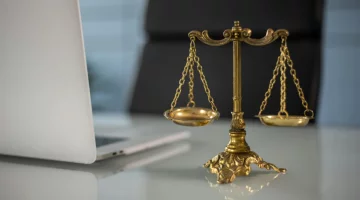How to Prove Negligence in Personal Injury Lawsuits
Tucson, AZ, known for its striking desert landscapes and rich cultural heritage, is a city that values community and accountability. With its warm sense of connection and vibrant local ethos, Tucson offers a backdrop where fairness and justice hold significant meaning. Yet, even in this close-knit environment, personal injuries can occur, leaving individuals and families grappling with emotional, physical, and financial burdens. When these injuries stem from negligence—whether on the road, in public spaces, or within professional settings—holding the responsible parties accountable becomes a vital step toward recovery.
Understanding how to prove negligence is at the heart of navigating these legal challenges. From establishing a duty of care to demonstrating its breach, the process can feel daunting without guidance. For those seeking justice, the principles of personal injury law in Tucson provide a pathway to assert their rights, secure fair compensation, and rebuild their lives with confidence.
Grasping the Concept of Negligence
Neglect is often at the core of personal injury lawsuits. It arises when a person or organization fails to show reasonable caution, leading to harm to someone else's well-being. A crucial aspect in a lawsuit is proving that this lack of caution directly led to the harm suffered. Gaining a grasp of neglect lays the foundation for building a personal injury case.
Aspects of Negligence
To establish negligence in a personal injury case, four elements must be proven: the duty to care for others, breaching that duty, connecting the breach to the harm caused, and quantifying the losses experienced as a result of the breach.
Assembling Proof
Gathering evidence is crucial for supporting a claim and building a solid case in court. Key forms of evidence such as records, photos or videos, eyewitness accounts, and expert insights help create a picture of what happened and support the argument for negligence.
The Significance of Records
Health documents provide information about the injuries sustained, providing an overview of the treatment given and how it affected the individual's well-being. They showcase the seriousness of the injuries and their direct link to the event at hand. Having records is vital for building a strong case.
Witness and Expert Viewpoints
Testimonies from witnesses and opinions from experts can effectively support allegations of negligence. Eyewitnesses share their experiences of the incident, while experts bring in their expertise to analyze technical details. By combining these testimonies, the credibility and depth of the allegations are enhanced significantly.
Determining the Responsibility to Provide Care
It is essential to prove negligence by demonstrating a sense of responsibility for the well-being of others in personal injury cases. This entails establishing that the defendant was obligated to take actions that could prevent harm. The extent of this responsibility differs based on the connection between the individuals involved. For example, drivers are expected to adhere to traffic regulations, while property owners must guarantee the safety of their premises.
Establishing a Violation of Responsibility
After determining one's responsibilities in a situation is sorted out, the subsequent stage entails showing a violation occurred. This involves proving that the defendant did not meet the level of care with their actions. Providing evidence like video footage from surveillance cameras or official reports on traffic incidents or instances of safety rule violations can help demonstrate this failure. It is crucial to emphasize these shortcomings when constructing an argument.
Establishing a Connection Between Cause and Effect
Establishing causation acts as the connection between a breach and harm in matters by showing a correlation between the defendant's actions and the injury inflicted upon another party. It requires a clear demonstration that the breach directly led to the injury suffered. Proving causation often involves intricate legal discussions that may require expert testimony
Determining the Extent of Harm Caused
The damages signify the actual losses suffered as a result of the injury, such as bills or income loss, along with turmoil involved in the process of recovery and healing from the injury situation. Correctly determining fair compensation that can help in facing these challenges caused by the injury and effectively documenting both financial and emotional impacts for claims will offer a detailed insight into the consequences of the injury suffered.
Looking for Advice from a Lawyer
Delving into the intricacies of negligence claims frequently necessitates the support of an advisor. Legal professionals provide direction in collecting evidence and understanding statutes while making arguments. Their specialized knowledge guarantees that all essential aspects are considered thoroughly to enhance the chances of achieving a result.
In Summary
Proving negligence in personal injury lawsuits demands meticulous attention to detail. By understanding the components, gathering robust evidence, and seeking expert guidance, individuals can build a compelling case. These efforts increase the chances of securing justice and obtaining rightful compensation for the injuries sustained.
More to Read:
Previous Posts:



